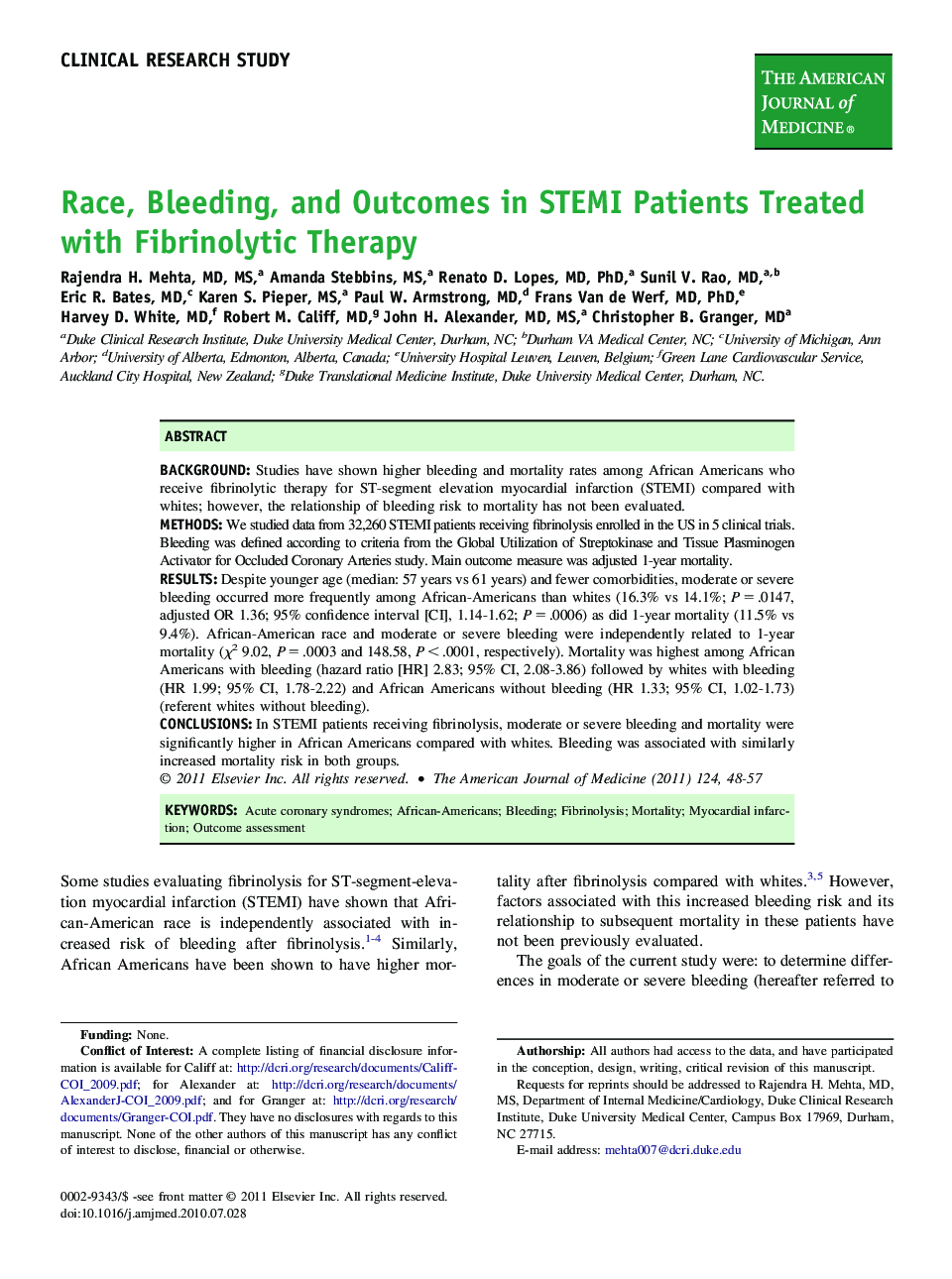| Article ID | Journal | Published Year | Pages | File Type |
|---|---|---|---|---|
| 2724037 | The American Journal of Medicine | 2011 | 10 Pages |
BackgroundStudies have shown higher bleeding and mortality rates among African Americans who receive fibrinolytic therapy for ST-segment elevation myocardial infarction (STEMI) compared with whites; however, the relationship of bleeding risk to mortality has not been evaluated.MethodsWe studied data from 32,260 STEMI patients receiving fibrinolysis enrolled in the US in 5 clinical trials. Bleeding was defined according to criteria from the Global Utilization of Streptokinase and Tissue Plasminogen Activator for Occluded Coronary Arteries study. Main outcome measure was adjusted 1-year mortality.ResultsDespite younger age (median: 57 years vs 61 years) and fewer comorbidities, moderate or severe bleeding occurred more frequently among African-Americans than whites (16.3% vs 14.1%; P = .0147, adjusted OR 1.36; 95% confidence interval [CI], 1.14-1.62; P = .0006) as did 1-year mortality (11.5% vs 9.4%). African-American race and moderate or severe bleeding were independently related to 1-year mortality (χ2 9.02, P = .0003 and 148.58, P < .0001, respectively). Mortality was highest among African Americans with bleeding (hazard ratio [HR] 2.83; 95% CI, 2.08-3.86) followed by whites with bleeding (HR 1.99; 95% CI, 1.78-2.22) and African Americans without bleeding (HR 1.33; 95% CI, 1.02-1.73) (referent whites without bleeding).ConclusionsIn STEMI patients receiving fibrinolysis, moderate or severe bleeding and mortality were significantly higher in African Americans compared with whites. Bleeding was associated with similarly increased mortality risk in both groups.
